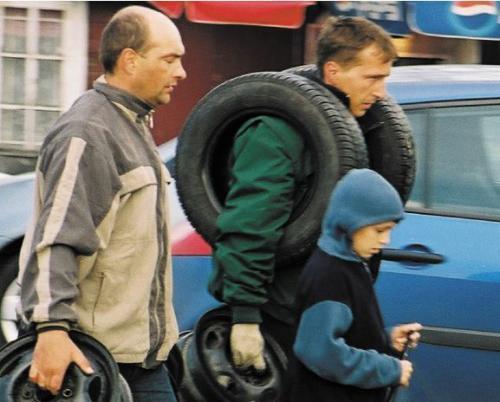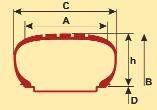
We do not use used
 Many drivers consider changing tires a necessary evil. Many people buy used tires. This is very risky.
Many drivers consider changing tires a necessary evil. Many people buy used tires. This is very risky.
Not only the tread pattern determines the suitability of a tire for use. The internal structure, invisible to the naked eye, is also very important. So using tires always means buying a pig in a poke.

Buying used tires is almost always associated with tire assembly problems. You can find two tires of the same type. Often four or five identical tires can only be dreamed of. Meanwhile, putting tires with different levels of wear on different wheels is risky, because when braking, the car can pull down.
Sometimes used tires offered come from cars that have been in accidents. Meanwhile, upon impact, the internal structure of the tire, invisible to the naked eye, made of wire or textile cord, is damaged. Such tires may explode or fall apart while driving (this situation may be preceded by a loud tire noise).
If you still want to buy a used tire, you should adhere to the following rules:
1. The tire must have a flat tread. Narrower on one side, serrated with some wear, it is not usable.
2. Traces of mechanical damage to the tread, traces of impacts, swelling or crushing are not allowed.
3. Tire age must not exceed six years. We will verify this by reading the numbers in the small square on the side of the tire. The last digit indicates the year of production, and the previous two weeks of that year. For example, 158 is the 15th week of 1998.
4. Tread must be at least 5 mm. It is true that the Polish traffic regulations allow the use of tires with a tread of 2 mm, but independent experts say that a tread of more than 4 mm does not guarantee proper grip on the road.
Identification of tires
The size designations on the sidewall define the tire's nominal dimensions, rim diameter, width and, in some cases, the structure of the tire. In practice, we can meet two different size systems. Here are examples of each:

I. 195/65 R 15
In the case of a tire whose parameters are described above: 195 is the nominal section width of the tire, expressed in millimeters (“C” in the diagram), 65 is the ratio between the nominal section height (h) and the nominal section width (“C”, h / C) , R is the designation for a radial tire, and 15 is nothing but the diameter of the rim (“D”).
II. 225/600 – 16
The description of a tire with characteristics 225/600 - 16 indicates: 225 - nominal tread width, expressed in millimeters (A), 600 - nominal overall diameter, expressed in millimeters (B), 16 - rim diameter (D).
Tire orientation
The arrow on the sidewall of the tire indicates the direction of rotation of the tire, especially for drive axles it is very important that the arrow indicates the direction of rotation. If the tires are also asymmetrical, we must distinguish between a left-handed and a right-handed tire. These designations will also be located on the side wall.
Can tires and rims be resized?
If for good reason we change the tire size, we must refer to the special replacement tables, because the outer diameter of the tire must be kept.
The vehicle's speedometer and odometer readings are closely related to tire diameter. Note that wider, lower profile tires also require a wider rim with a larger seat diameter.
Finishing a new wheel is not enough. You should check if the new, wider tire will fit into the wheel arch and not touch the suspension components when cornering. It should be emphasized that wider tires cause a drop in the dynamics and top speed of the car, and fuel consumption may also increase. From the point of view of proper operation, the tire size selected by the manufacturer is optimal.